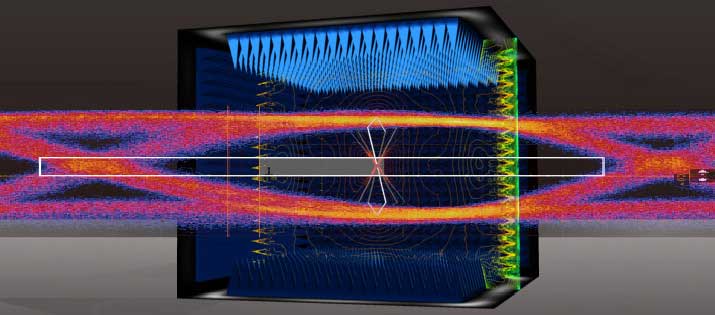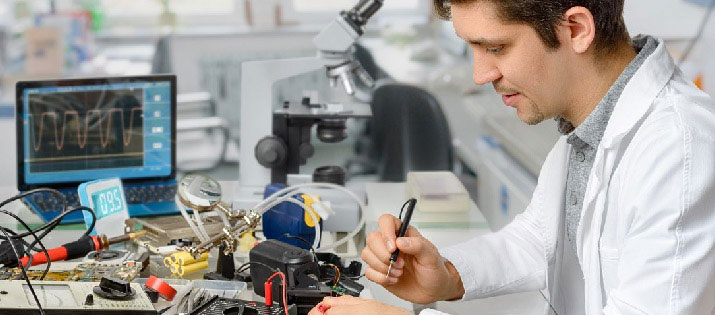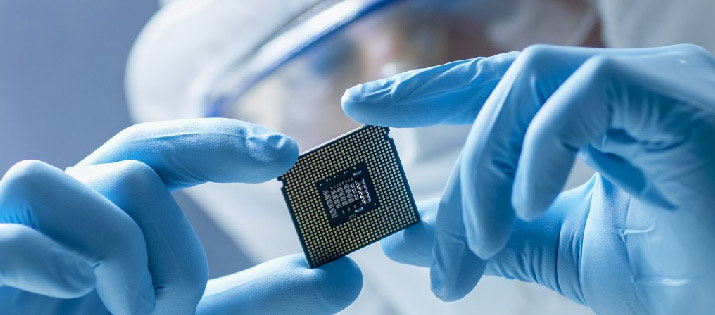Allion Labs/ Otto Wei
Chronic cardiovascular diseases can be detected by using hospital electrocardiogram (ECG/EKG) measuring instrument. However, some typical symptoms of acute heart disease, such as premature ventricular contractions PVCs, are hard to be detected early. PVCs is generally accompanied with hypertension, and frequent PVCs could cause sudden death.
But now, patients can use a wearable device to detect heart signals and receive warnings in advance. Although ECG’s pathological features are more precise when using electric signals, using optical ways such as photoplethysmography (PPG) to measure cardiac rate is relatively simple.
There are several important features in the ECG. Take the first lead ECG as an example:
The P wave is the signal (waveform) recorded on the body surface electrode when the two atriums are depolarized and contracted, which represents the depolarized wave passing through the atria. When the depolarization of the atrium is completed, the waveform will return to the point of the baseline.
At the end of the P wave, ventricular myocardial depolarization causes ventricular contraction, which represents the process of electrical activity when the left and right ventricles are depolarized. As the ventricle is much larger than the atrium, the height of the QRS complex is also much higher than the P wave of the atrial depolarization. PS atrial repolarization also occurs at this time, due to the small waveform, it is covered by the depolarized and diastolic waveform of the ventricle.
T wave represents changes in ventricular repolarization and relaxation.
The heart completes a periodic contraction and relaxation via the above process. Considering this process as electrical signals, it is simply the process of depolarization and repolarization. The electrical signal is combined and recorded on the ECG drawing, which is an electrocardiogram (Figure 1(a)).

Figure 1(a) – ECG (Electrocardiogram)
12 -lead Electrocardiogram
Lead is an imaginary line between 2 electrodes. 12 -lead electrocardiogram (Figure 1(b)) will generate 12 separate graphics, but the body connects only 10 physical electrodes. Standard ECG contains 12 leads including the groups: 1. Standard limb wire: I, II, III 2. Enhance limb leads: aVR, aVL, aVF 3. Chest lead: V1, V2, V3, V4, V5, V6 Some ECG recorders may record multi-channel and all leads in a single beat. In that way, doctors can better analyze complex abnormal heart rhythms.
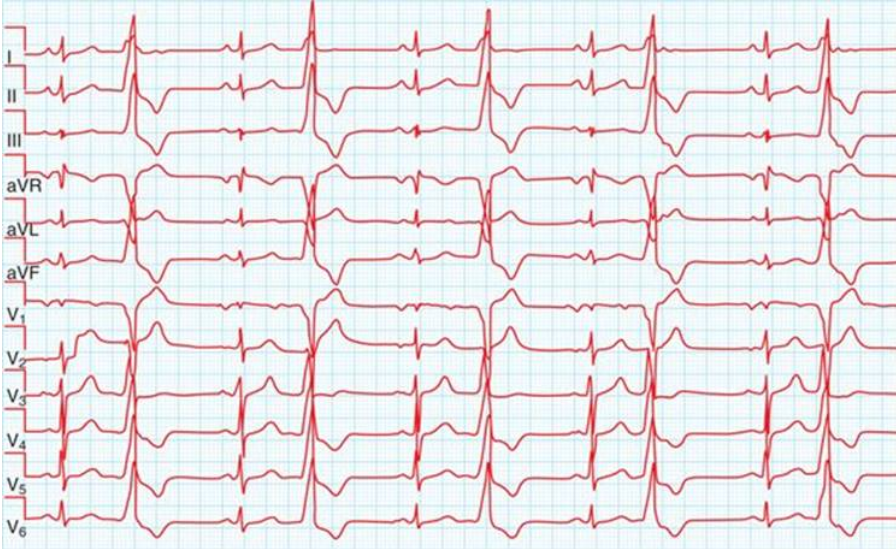
Figure 1(b) – 12-Lead ECG (Electrocardiogram)
Figure 1(c), which shows the bottom 12- lead ECG, is a practical case. A 48 -year-old man with no serious medical history was taken to the emergency room with severe breathing difficulties and dizziness. He described the similar symptoms which he had in the past 4 months. The electrocardiogram showed significant premature ventricular contractions (PVCs) at 37 milliseconds (Figure 1(c)), and the patient was diagnosed with aortic cusp ventricular tachycardia and other symptoms.
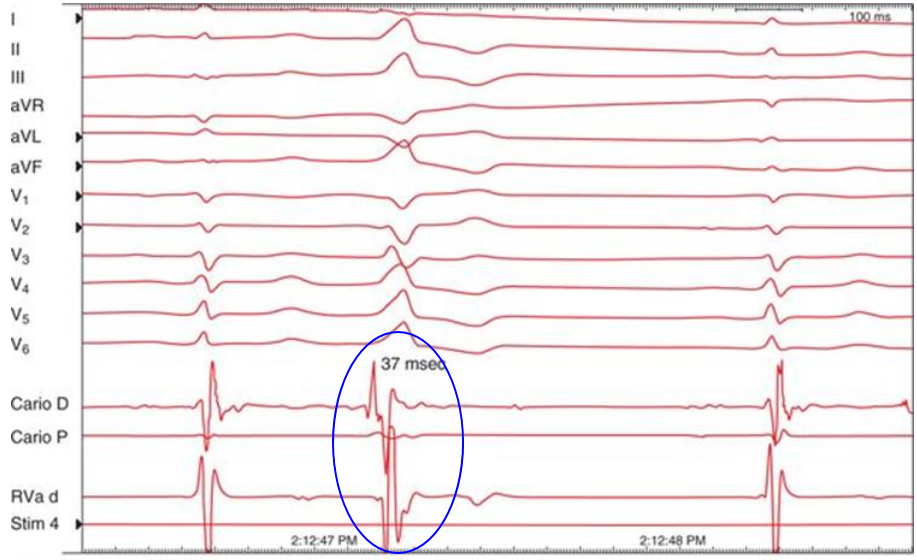
Figure 1(c) – PVCs shows on 37msec
Wearable Devices with functions of Heart Rate Measurement are Trending
In short, the measurement of ECG mainly uses the potential difference between the two poles of the heart to learn the patterns. The measurement of a photoplethysmograph (PPG) (Figure 2) with an optical watch or bracelet is simple and fast. Although photoplethysmographic (PPG) waveforms can only tell basic information of users heart condition, its heart rate measurement capabilities have been used extensively on sport watches and wearable devices (Figure 3).

Figure 2 – PPG ( Photoplethysmography )
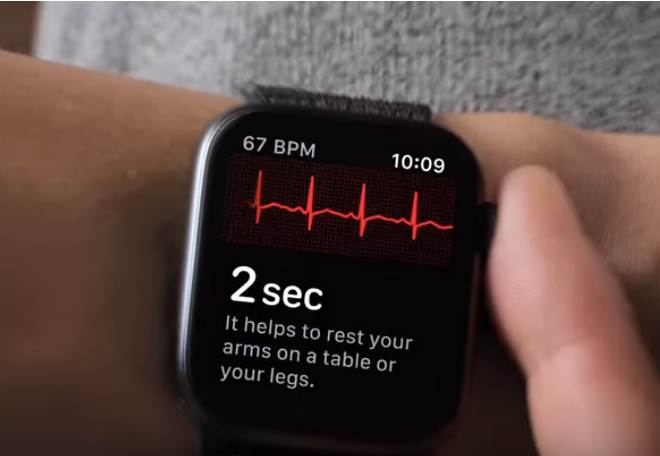
Apple Watch S4 with ECG/PPG Ⓒ Apple
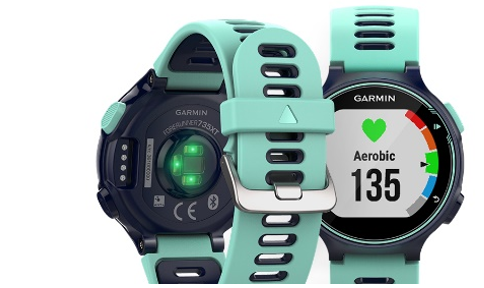
Garmin 735XT wit PPG Ⓒ Garmin
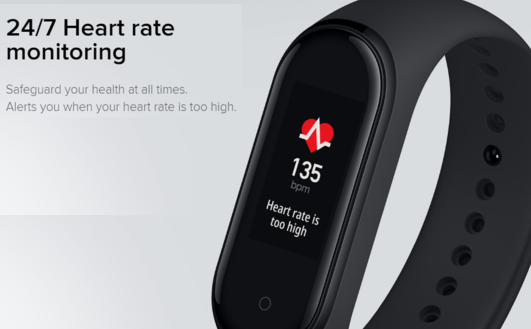
Mi Band 4 with PPG Ⓒ MI
Figure 3 – Wearable Devices with Heart Rate Detection
ECG/PPG Signal Standard Test
There are hundreds of wearable devices that use PPG to measure heart rate in the market. Manufacturers claim that their health bracelets or watches are accurate, but the signal waveforms are quite different. Since tiny physiological signals need to be amplified at least 2 times in the measurement, the distortion of the products often occurs. Allion Labs Inc. is expected to introduce the ECG/PPG signal standard test (Figure 4, 5) to assist the customer’s products to pass IEC 60601-2-47 and China YY0885. Take an incorrect output for example of IEC 60601-2-47 standard measuring items in chapter 201.12.4.4: with AECG4. 0 standard test instruments, we can list 10 items as following (Table 1):
| 201.12.4.4.101 | Linearity and dynamic range |
| 201.12.4.4.102 | Input impedance |
| 201.12.4.4.104 | GAIN accuracy |
| 201.12.4.4.105 | GAIN stability |
| 201.12.4.4.107 | Multichannel crosstalk |
| 201.12.4.4.108 | Frequency response |
| 201.12.4.4.109 | Function in the presence of pacemaker pulses |
| 201.12.4.4.110 | Timing accuracy |
| 201.12.4.4.111 | GAIN settings and switching |
| 201.12.4.4.112 | Temporal alignment |
Table 1 12 test items in IEC 60601-2-47
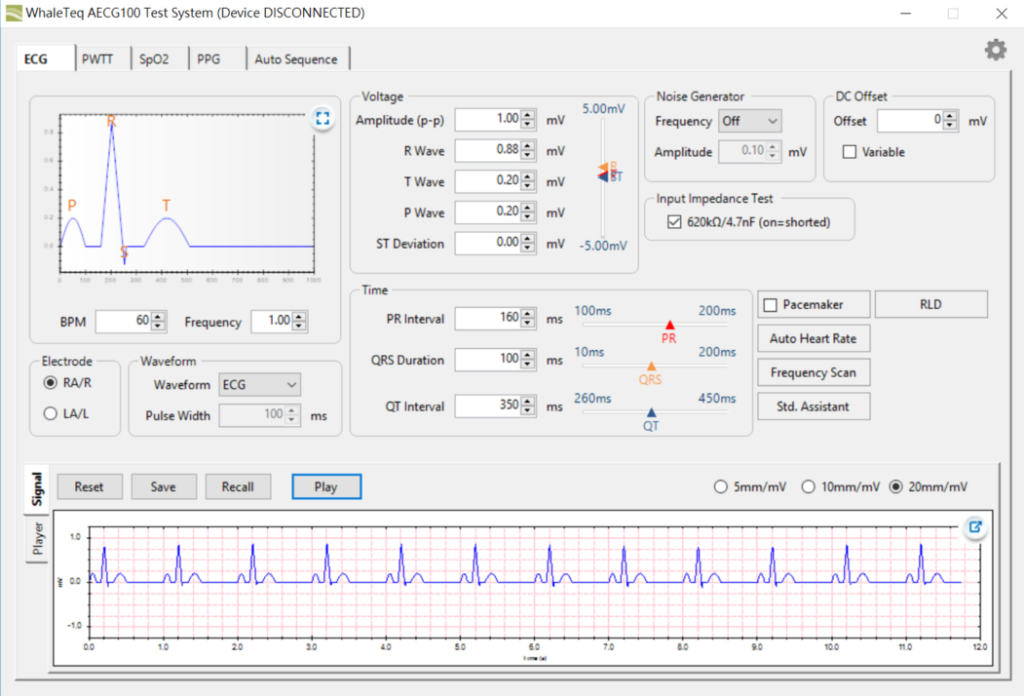
Figure 4 – ECG Signal define GUI
In ECG signals, for example, generally use R wave to determine heart rate, the normal R wave frequency will fall between 0.5Hz ~ 4Hz, in other words, heartbeats between 1 time 2 seconds to 4 times a second. The heart rate showing on a product is determined to pass if the measurement value falling within this interval, and for the PPG product heart rate measurement is the same.
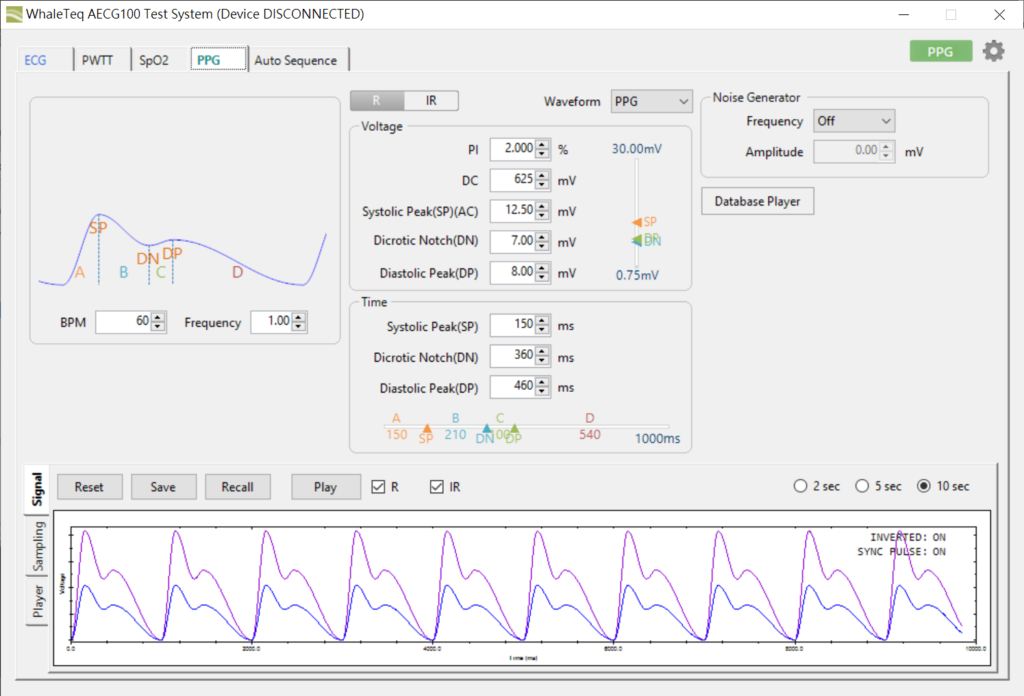
Figure 5 – PPG Signal define GUI
Come to Allion for the ECG/PPG Wearable Device Testing
Allion have the expertise, resources and tools to verify your wearable devices and ensure they pass the medical and sport ECG/PPG measurement with the regulations of heart rate monitor IEC60601-27 and ECG / PPG Intelligent Wearable Products Testing, which is standard launched by The Federation of China(Shenzhen) Wearable Industry (FSW).
For our tests, Allion has sampled ECG instruments in the market (Figure 6 (a)) and PPG heart rate sport watch (Figure 6(b)) and tested at our laboratories. The AECG instrument is utilized to engage in tests, as it can correct sensors on watches, and play standard ECG/ PPG signals which are used to measure the stability and accuracy. Similarly, for wearable products, if the basic waveform of the product is strictly regulated during verification, the subsequent cardiac disease judgments will be more meaningful.
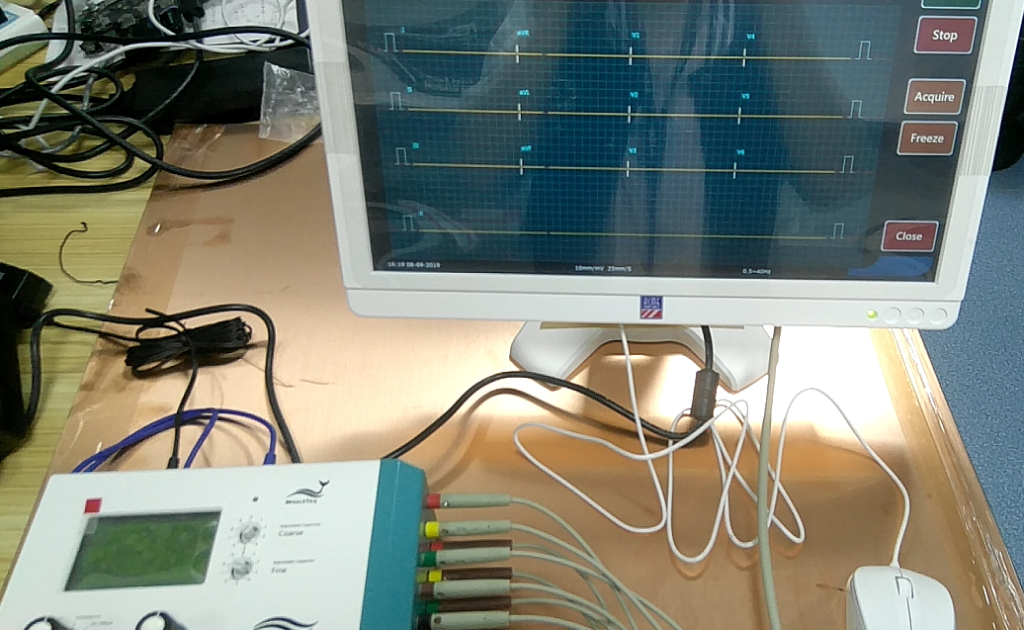
Figure 6 (a) – ECG Device Sample Tested by CMRR
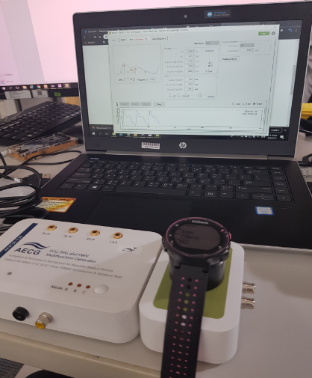
Figure 6 (b) – PPG Watch Tested by AECG
According to an analysis report written by the National Institute for Information Industry (National Institute for Information Industry’s survey to Information and Communication Technology(ICT); 2018 ), the ICT industry continues to cooperate with medical facilities to build solutions for wearable devices. The applications of such wearable will continue to grow; we are already seeing many insurance companies buying their customers smart watches from Apple, Samsung, and Garmin.
Since the trend of personalized health management has become inevitable, we believe all wearable with ECG/PGG functions should be verified, whether it is professional medical equipment, or popular consumer electronics with simple heart rate, pedometers, calories counting functions. The functions of the Bluetooth®, Wi-Fi communication must be strictly tested to ensure consumer rights.
References:
- [1] PVCs https://www.mayoclinic.org/diseases-conditions/premature-ventricular-contractions/symptoms-causes/syc-20376757
- [2] https://doctorlib.info/medical/color-atlas-synopsis-electrophysiology/19.html
- [3] http://www.afhealthcare.org.tw/index.php?action=news-in&pid=64
- [4] IEC60601 -2-47 https://webstore.iec.ch/publication/2666
- [5] Test Method of ECG/PPG wearable smart technology products http://www.fswi.org.cn/
- [6] MIT-BIH https://physionet.org/content/mitdb/1.0.0/
- [7] Whale Technology http://www.whaleteq.com/tw/
- [8] Design of low complexity optical instant ventricular early contraction detection system https://hdl.handle.net/11296/rfb52b
- [9] ICT brand health care wear device development analysis https://www.itis.org.tw/NetReport/NetReport_Detail.aspx?rpno=566898777












